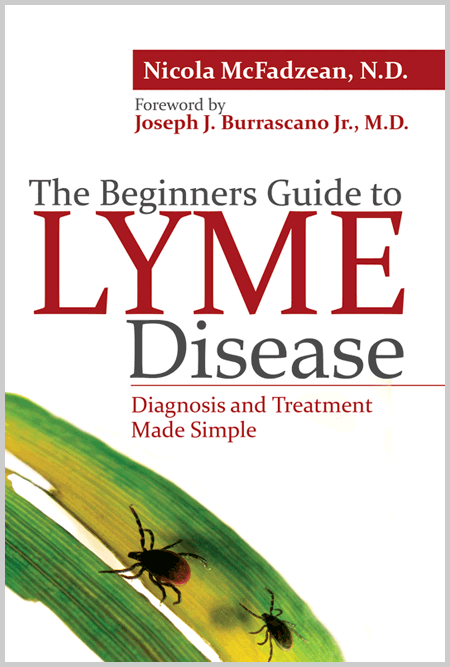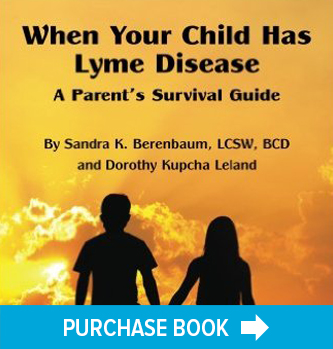Beginner’s Guide to Lyme Disease – Diagnosis and Treatment Made Simple
Reviewed By: Dorothy Kupcha Leland, LymeDisease.org
One of the most important things a person with Lyme disease needs is information. Because of the peculiar politics connected with Lyme and the crazy stuff that comes with it, people must do their own research to make sure they get the care they need. Websites and social media can help point you in the right direction, but the flood of often-conflicting information on the internet can be utterly overwhelming. That’s why I’m very pleased to see Dr. Nicola McFadzean’s new book, The Beginner’s Guide to Lyme Disease (BioMed Publishing Group, 2012.)
I daresay that if you were writing a book about diabetes, lung cancer, or just about any other health condition, you would not need to start out with a section about the politics of that disease. But such background is crucial for anyone seeking treatment for Lyme disease. Without an understanding of how the Infectious Diseases Society of America and the Centers for Disease Control make it almost impossible for many Lyme patients to get proper treatment, people with Lyme can waste valuable time and resources before getting the help they need.
Like in her previous book, The Lyme Diet: Nutritional Strategies for Healing from Lyme Disease, McFadzean takes complex information and makes it easily understandable. Section one of The Beginner’s Guide to Lyme Disease sets the stage by discussing the global scope of the disease and the politics that make it so difficult for Lyme patients to get appropriately diagnosed and treated. It’s a good summary for well-meaning family members who just don’t understand what you’re up against. Section Two lists the fundamentals: What is Lyme, how it’s transmitted, symptoms, testing, etc. Section Three explores treatment options.
McFadzean is a licensed naturopathic doctor who practices in San Diego and occasionally sees patients in her native Australia. She uses both antibiotics and natural protocols in her practice. Here she offers information about both, and why you might choose one over another (or several in combination) in various circumstances.
Readers may be especially interested in the chapter entitled, “Can Natural Therapies Alone Treat Lyme Disease?” She replies to the question with a resounding “sometimes.” Although she occasionally treats people without antibiotics and achieves good results, she says, “I honestly think that the majority of Lyme patients require antibiotic treatment at some time during their treatment.”
She continues: “There is no answer that is right for everyone, and the thing that might be right for an individual today may not be right for them six months from now….Whether natural treatments or antibiotics are used, a multi-system, multi-factorial approach is the key to recovery from Lyme disease. We need to treat the person, not the disease.”
The Beginner’s Guide to Lyme Disease has an informative introduction by top Lyme expert Joseph Burrascano, MD. In addition, his authoritative Lyme treatment guidelines are printed in the back of the book. Other helpful appendices include a summary of medications and common dosages, how to cope with herx reactions, information about biofilms, and sample naturopathic protocols.
Especially if you are new to Lyme, but even if you’re not, you might want to ask Santa to put this in your stocking.
Here’s a You Tube video of Nicola McFadzean, ND, talking about her new book: http://youtu.be/NWbCllJt6aY


















